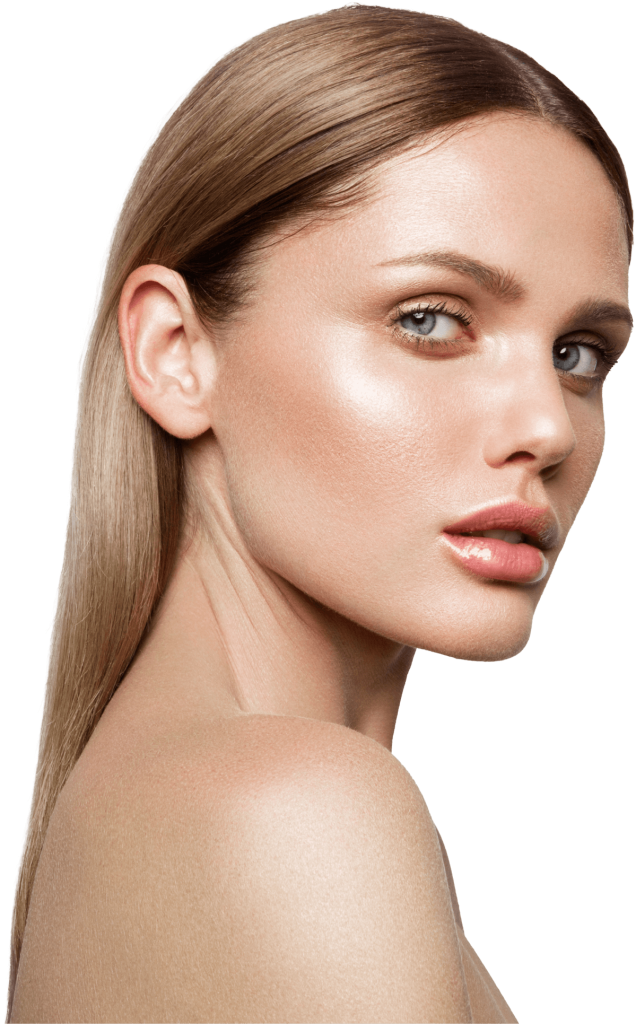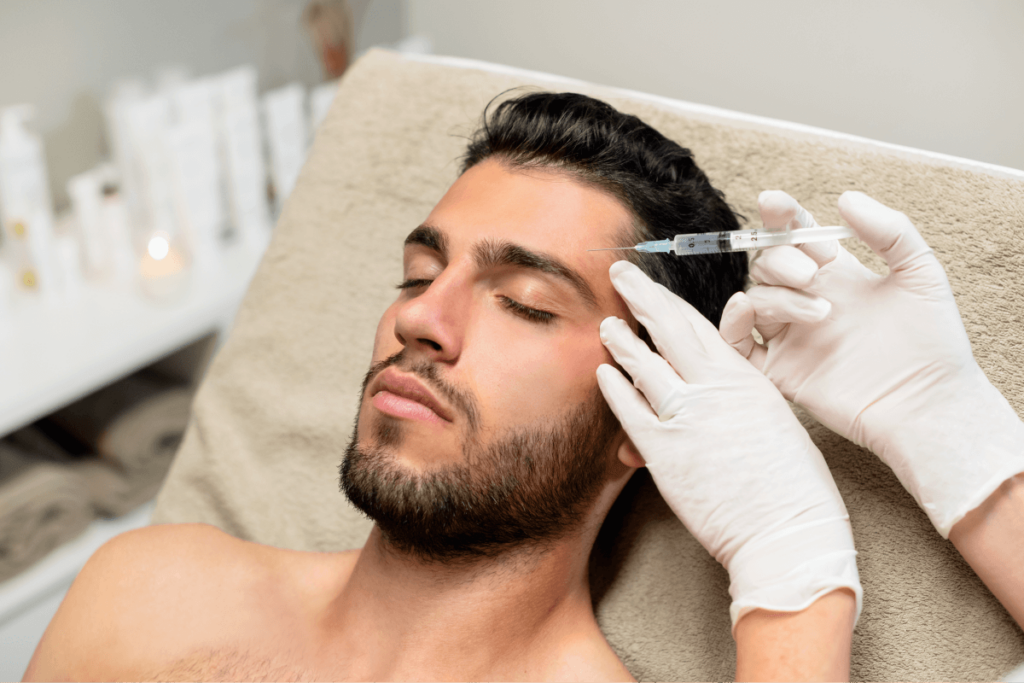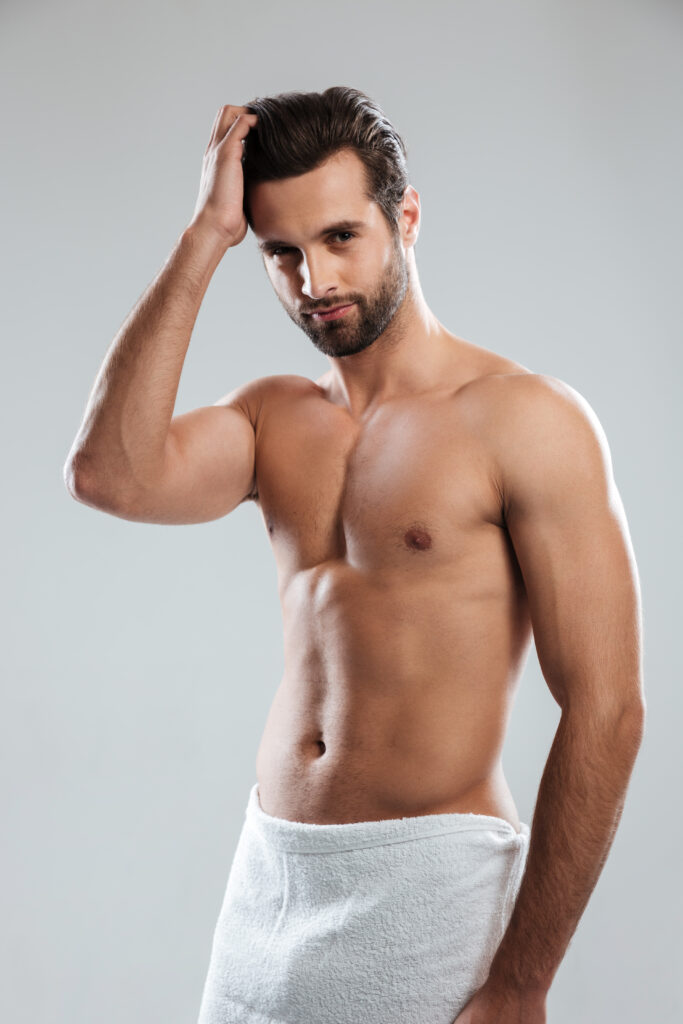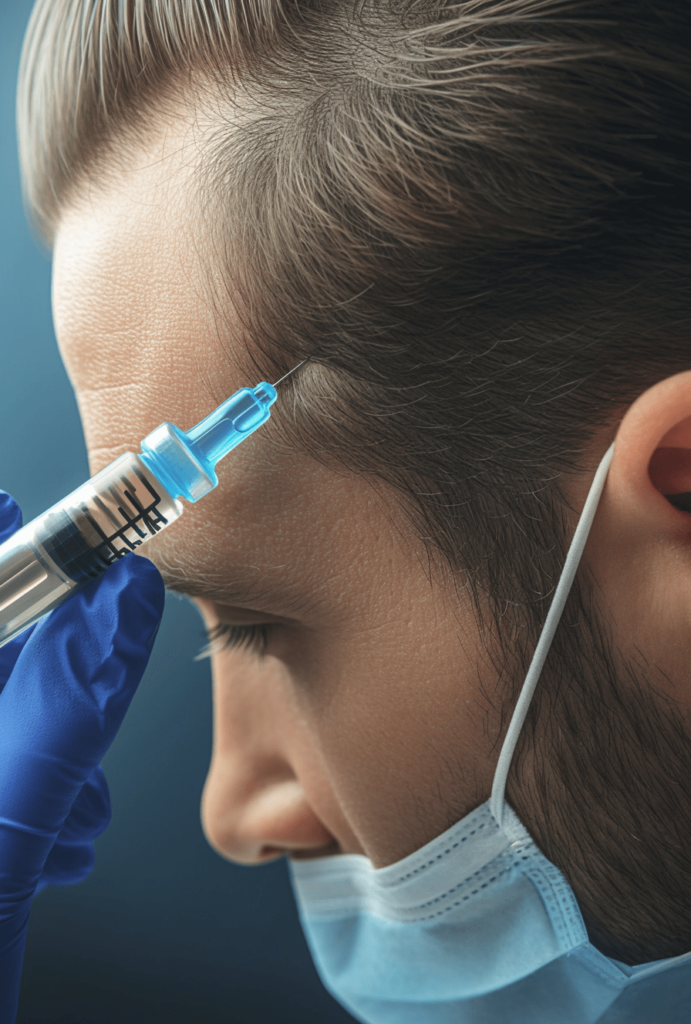Hair loss can be a distressing condition that impacts both men and women, leading many to seek effective solutions to restore their hair’s thickness and vitality. One promising avenue in the realm of hair restoration is Platelet-Rich Plasma (PRP) therapy. This innovative treatment utilizes the healing properties found in the patient’s own blood to stimulate hair growth and improve overall hair health.


PRP (Platelet-Rich Plasma) treatment for hair loss is a non-surgical procedure that taps into the regenerative power of platelets, blood vessels, stem cells, white blood cells, and concentrated platelets. These components, including the concentration of platelets and platelet count, are crucial for wound healing and tissue repair, enhancing blood flow and supporting cell growth. In the context of hair loss, such as androgenic alopecia and androgenetic alopecia, PRP stimulates dormant hair follicles, improves hair thickness, and fosters a healthier hair growth cycle.
This innovative method utilizes the body’s healing mechanisms, offering a promising option for various types of hair loss. With its impact on blood supply and concentrations of platelets, PRP proves effective for individuals experiencing common conditions like androgenic alopecia, providing a viable treatment option among various treatments for hair loss.
PRP hair injection treatment is considered a successful treatment method in plastic surgery for various types of hair loss, including androgenic alopecia (male and female pattern baldness).
This innovative approach stands out as a promising option for hair treatments, stimulating natural hair growth and offering a viable option for individuals seeking an alternative option for hair loss.

PRP (Platelet-Rich Plasma) therapy for hair loss caters to a diverse group, including those with androgenic alopecia, androgenetic alopecia, alopecia, thinning of hair, and persistent hair shedding. This inclusive treatment extends to individuals with various medical conditions contributing to hair loss. Whether facing male or female pattern baldness or other hair-related concerns, PRP offers a natural and minimally invasive option for rejuvenating the scalp and promoting healthier hair growth. A comprehensive assessment by a qualified healthcare professional helps determine the suitability of PRP based on individual needs.

Yes, women can indeed benefit from PRP (Platelet-Rich Plasma) treatment for hair loss. PRP injections for hair loss is a versatile and effective option for both men and women experiencing various types of hair loss, including female pattern hair loss and other conditions leading to thinning or weakened hair.
Women who are experiencing mild to moderate hair thinning, have inactive hair follicles, or are looking to enhance the thickness and quality of their hair may find PRP treatment beneficial. As with any medical procedure, it’s crucial to undergo a thorough consultation with a qualified healthcare professional to determine the suitability of PRP based on individual circumstances.
The entire process is typically completed with minimal downtime, allowing most patients to resume their daily activities shortly afterward. Specific details of the procedure may vary, and it’s advisable to consult with Botox Montreal’s for personalized information about your PRP treatment plan.


We are committed to transparency and ensuring that our valued clients receive the best possible care. Contact us today to embark on your journey to hair restoration, and let us guide you with a comprehensive understanding of the investment involved in achieving the results you desire.
PRP can be combined with various hair loss treatments to enhance its effectiveness. It is often used in conjunction with hair transplant surgery or other therapies like laser treatments, providing a comprehensive approach to hair restoration. The combination of treatments aims to address different aspects of hair loss and promote a more robust and natural-looking result.
The cost of PRP (Platelet-Rich Plasma) treatment for hair loss at our clinic in Montreal is tailored to the unique needs of each individual. As prices can vary based on factors such as the number of sessions required and the specifics of the treatment plan, we recommend scheduling a consultation with our experienced healthcare professionals. During this personalized session, our specialists will conduct a thorough assessment, discuss your goals, and provide you with a detailed cost estimate for the PRP treatment.
PRP (Platelet-Rich Plasma) injections are generally considered safe when performed by qualified and experienced healthcare professionals. Since PRP utilizes the patient’s own blood components, the risk of an allergic reaction or disease transmission is minimal. Major side effects are rare. However, as with any medical procedure, there are potential considerations for minimal side effects.
Within the domain of sports medicine, medical professionals have employed PRP to facilitate the healing of muscle and tendon injuries. Numerous clinical studies and prospective studies, along with patient satisfaction reports, have supported the effectiveness of PRP in treating hair loss. Platelet-derived growth factors, along with other elements present in PRP, contribute to the activation of dormant hair follicles and stimulate the growth phase of the hair cycle. This wealth of evidence highlights PRP as a viable and satisfying option for those seeking to combat hair thinning and baldness.
The PRP (Platelet-Rich Plasma) hair loss treatment procedure typically involves minimal discomfort. Most patients describe experiencing only mild pain or discomfort, which is generally well-tolerated. To enhance patient comfort, healthcare providers often use a local numbing agent on the scalp before administering the PRP injections. Individual pain thresholds may vary, but the injections are precise, and the process is designed to be minimally invasive, with any discomfort being temporary. After the procedure, some patients may briefly experience mild soreness or a sense of fullness in the treated area, which tends to subside shortly after. Communication with your healthcare provider about any concerns or sensitivities can help ensure a more comfortable experience during the PRP hair loss treatment.
The recovery time for PRP (Platelet-Rich Plasma) treatment for hair loss is generally minimal, allowing most individuals to resume their regular activities immediately after the procedure. This non-surgical, outpatient approach is designed to have no significant downtime. While some patients may experience mild side effects such as minor swelling or bruising at the injection sites, these effects are usually temporary and resolve on their own within a few days. Following the procedure, healthcare providers may offer specific post-treatment care instructions, which could include recommendations to optimize the treatment’s effectiveness or avoiding certain activities or hair products.
Results from PRP (Platelet-Rich Plasma) treatment for hair loss can vary widely among individuals. Generally, patients may begin to observe positive changes, including increased hair count, within a few weeks to several months after the initial sessions. Four treatment sessions are generally recommended, spaced 4 weeks apart. The gradual nature of hair regrowth and improvements in hair health should be considered, as the timeline is influenced by factors such as individual response, the type and severity of the hair loss condition, the treatment plan (including the number and frequency of PRP sessions), and the overall health of the individual. Realistic expectations and patience are crucial, as visible changes take time. Continuous monitoring through follow-up assessments with the healthcare provider will help determine the effectiveness of the treatment plan and whether any maintenance treatments are necessary.
Yes, PRP treatment is a versatile medical procedure that can be utilized in various areas of healthcare beyond hair restoration. Here are some other procedures where PRP is commonly employed: